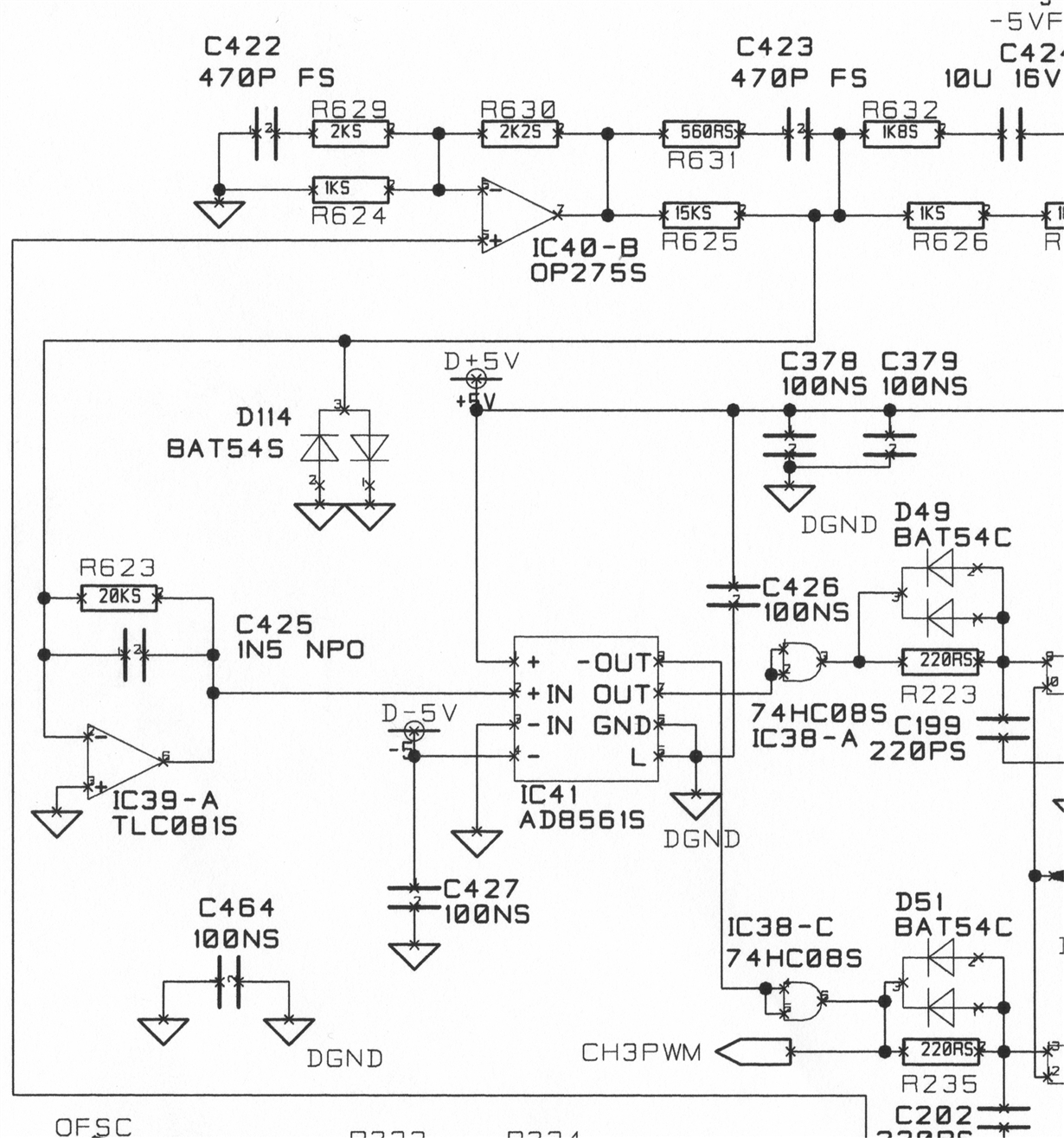Other Parts Discussed in Thread: TL081, NE5534A, TL3116, LM360, LM361
I'm working with a mature high power Class D amplifier design, and am having some issues with noise generated in the naturally-sampled PWM modulator. This comprises a simple analog ramp generator (an op-amp based integrator, creating a roughly 150kHz triangle wave) and, at present, an AD8561 comparator from Analog Devices. The noise present within the input stage of the comparator appears at the output PWM as a random jitter of the edges -- effectively the comparator input voltage noise is added to the desired signal, and modulated along with it. Given the amplifier's relatively high power (main rails of +/- 150V DC) the output stages effectively apply 30dB of gain to whatever input noise exists within the comparator -- but nobody seems to be able to comment on how big this is, and which comparators might be chosen as alternatives to help reduce the issue.
The problem is NOT to be confused with the multiple output transitions that can be caused by inadvertent feedback around the comparator. These aren't a problem (the comparator actually switches very cleanly, thanks to careful attention being paid to decoupling, PCB layout and the fact that both inputs being driven by very low impedance nodes). Adding hysteresis does NOT help with my specific issue; DC coupled hysteresis simply displaces slightly the threshold at which the comparator switches, and then speeds the transition once it's begun. Adding AC hysteresis (that is, a small positive feedback capacitor) only helps to speed a transition once it's begun.
The noise voltage - which IS the problem - also shifts the comparator's switching threshold, but does so randomly and regardless of whether any hysteresis is added. Measurements confirm the total lack of improvement by adding hysteresis.
Can anyone help shed light, please, on the sort of input noise voltage density we may expect from an analog comparator of the TL3016 (which is TI's version of the LT1016m itself something of an industry standard and the predecessor to ADI's AD8561) ? Is there a general trade between comparator speed and input noise voltage? Any recommendations for a lower noise alternative?
Thanks in advance! - Mike Turner



